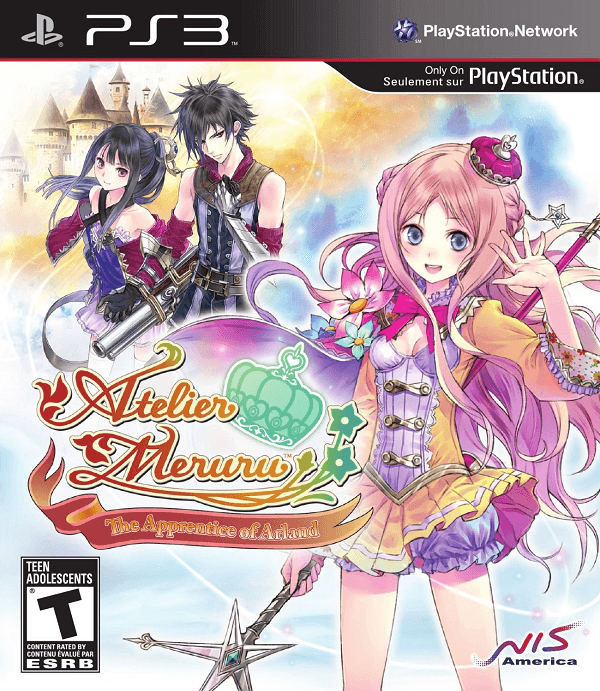
Atelier Meruru: The Apprentice of Arland
Developer: GUST
Publisher: NIS America
Release Date: May 29, 2012
Price: $49.98 – Available Here
Overview:
Over the past few years NIS America has brought us each game in the Atelier Arland series of games, beginning with Atelier Rorona back in 2010. This marked the first time that the series had appeared on the PlayStation 3 and it was far from the last, as Atelier Totori ventured into JRPG fans’ hearts just last year. Now NIS America has brought the Atelier Arland series to a close with the third and final game of the series, Atelier Meruru: The Apprentice of Arland. With two games of the Arland series already under their belts, has Gust and NIS America brought us the best alchemical combination of gameplay and unique storytelling yet?
Story:
The Kingdom of Arls is a kingdom in name only, as the country has fallen behind in staying up with modern technology and developing their country properly. As such, their nation only has a few residents who are willing to stay in a nation so far behind the rest of the world. In fact, the King of Arls has spoken with the leader of Arland and in five years’ time the larger nation of Arland will absorb the land of Arls.
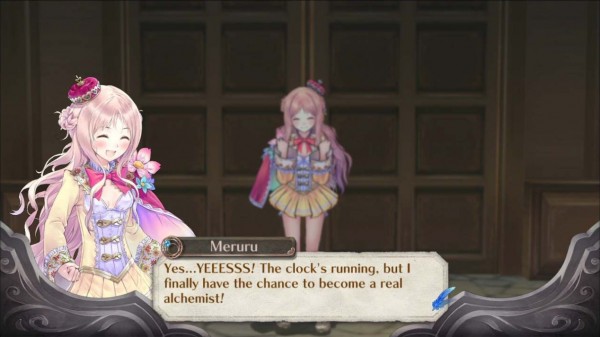
With the matter of the merger settled, an alchemist many may remember has settled down in the kingdom of Arls, an alchemist named Totori. The princess of the Arls, Meruru has taken quite an interest in Totori and her practice of alchemy. Much to the dismay of her father the King, Meruru convinces Totori to take her on as an apprentice who she will teach alchemy to. However the King of Arls will only allow this under one condition.
Players are once again limited to a certain time constraint with Atelier Meruru as the condition this time around is that Meruru use her new found love of alchemy to develop and improve the kingdom, bringing prosperity to the languishing nation. If she can improve the country and bring its population up in three years, the King will acknowledge her love of alchemy and allow her to continue, effectively extending the players time until the merger with Arland in five years.
While this may be the players’ goal, in the end the storyline doesn’t revolve around any impending doom or threat that will end the world. In fact the storyline for Meruru follows the same path that we saw in the past Atelier Arland games, a much more personal and lighthearted one. Players will follow the journey of a young and slightly naïve princess who knew barely anything outside of the castle walls until she becomes just as great an alchemist as her teacher and her teacher’s teacher.
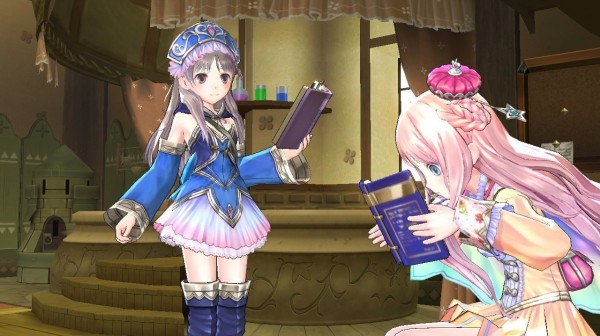
Along the way players will slowly become better friends with other characters in the game and in these moments is where most of the game’s storyline takes place. In the end there are only a few structured main storyline segments while most of the events shown to the player are whenever Meruru experiences something with one of her friends.
Most of these segments are presented as if they were happening in Meruru’s everyday life and there will be times you will truly feel connected with a few of the characters. This helps immensely whenever something funny occurs, as there are a number of running jokes which are presented multiple times, and although players will likely be able to guess what will happen, they will still find themselves chuckling at whatever happened.
Ironically, there are a very large amount of characters from past games which return to make their appearances in Atelier Meruru; in fact many of them join you as escort characters to fight in battles. This includes your teacher Totori who takes a more hands on role by joining you early on, as well as Totori’s teacher Rorona who happens to have undergone a slight change… one that has turned her into a little girl!
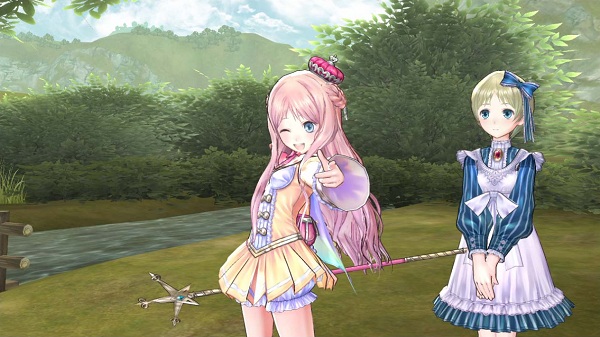
Besides these two returning main characters, other allies from previous games appear to help out Meruru in one way or another, so those who have not played the past games will miss out slightly on these character references and how everyone knows each other. There is a brief prologue which recaps the past two games very quickly, but this doesn’t provide too much background information. In the end however, lack of knowledge about past games in the series isn’t too much of a detriment as Meruru’s story doesn’t pull any major plot points from past titles.
Visuals:
Atelier Meruru uses the same type of cell shaded graphics that the past series have used, including a color palette that is very soft on the eyes and full of bright colors. With the use of this art style, every character, including simple NPCs, are well detailed. Whether these characters are simply moving around towns or fields or in battle, Meruru and her friends retain the same level of detail as always.
Atelier Meruru also continues to use the same event presentation, where characters usually talk to one another in visual novel styled scenes, with each character talking given a still portrait. These still portraits appear to be hand drawn and change their appearance depending on the characters’ mood at any given time. Unlike past games, it appears that Meruru has a wider array of portraits to go along with her bursting personality. Also, players will occasionally be shown a special fully drawn image as seen below.
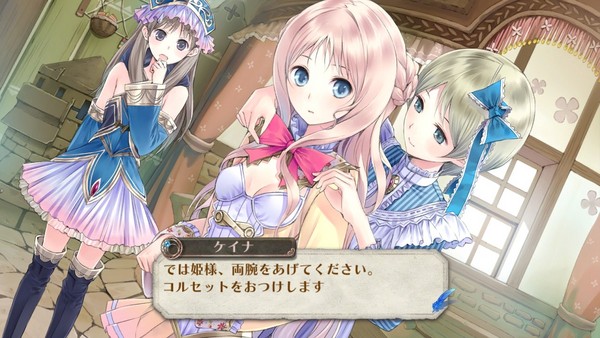
Unfortunately the same level of quality can’t be found everywhere, as most of the fields that characters will explore are relatively simple and similar in appearance. Thankfully the design of the monsters provides a decent amount of uniqueness to each area. These enemies are all well designed and feature detailed models as well. The combination of well-designed enemies, colorful main cast of characters and the water-colored styled color palette create a lovely experience every time battle is entered.
Audio:
As with the game’s visual presentation, much of the game’s audio retains the same quality and tone of past Atelier Arland games. As such the background music is very soft and mellow, which is great for field exploration and whenever time is spent in the town. The battle music is nice and enjoyable as well as it helps accentuate difficult battles while easier fights don’t feel too much different than normal exploration due to the nice choice in background music. It is also worth mentioning that the opening theme song is quite lovely, as I found myself listening to it every time I booted the game up.
Now Atelier Meruru’s voice acting is hit or miss. With plenty of returning characters plenty of old voice actors have returned to reprise their roles, with the exception being Rorona of course. These old voice actors, especially Totori, provide a nice accompaniment to the new cast of characters. Meruru’s voice acting is handled well; with her voice actor always sounding as excited as the character is which really helps sell how Meruru is always bursting with energy.
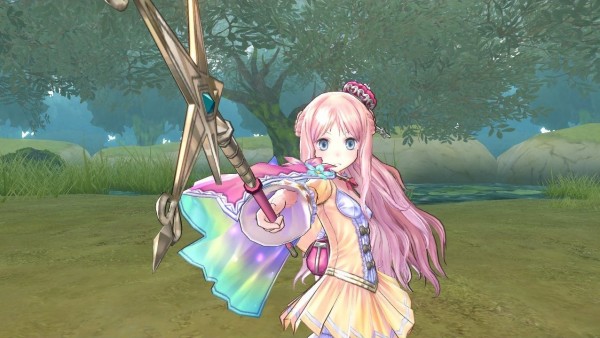
Unfortunately a few of the side characters have some rather basic voice acting which doesn’t fit their characters, which is unfortunate due to the large amount of time players will spend getting attached to Meruru’s allies. It is worth noting that the Japanese voice track is included in the release, though personally the English cast was still more enjoyable to listen to, simply thanks to the returning cast and Meruru herself.
Gameplay:
Now the key mechanic to Atelier Meruru is the fact that you have to now develop a country and meet specific population goals within a certain time frame. To do this, you have to acquire development points which will allow you to build various buildings, such as an Academy, housing, a bigger wall and more. Each of these developments can add more population to the kingdom of Arls and may also provide side bonuses to Meruru and her friends as well.
But how do you receive these development points you ask? Well this is where the balancing act of Atelier Meruru comes into play. As your days pass by, you will receive various requests in the forms of letters outside of Totori’s (your) workshop. These requests are then taken to the King’s right hand man, Rufus, who will give you a certain requirement to complete the requests.
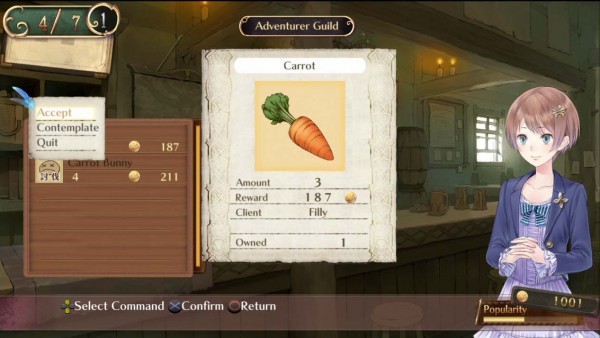
Interestingly enough, the requests can be anything from picking all of the plain grass from a field, to slaying a strong monster, slaying a number of monsters, slaying all the monsters in a specific area to open up a path or delivering a specific amount of alchemized goods to a place. These quests are often varied enough that the player won’t find them too repetitive. Once the player completes these requests, they will receive the DP they need to develop the kingdom.
However as I mentioned before, there is one specific meter players must keep an eye on besides however many days pass. This meter is your popularity meter, which can only be increased by taking jobs at the Tavern. These jobs are similar to what players experienced in Atelier Totori, however the time limit for these jobs has been removed. Whenever the player finishes these jobs, they will receive a bit of money and a boost to their popularity level.
If the player’s popularity falls too low, they will find their population actually dropping, instead of increasing. Unfortunately though, it is quite difficult to actually allow your popularity to fall that low as a number of these quests are stunningly easy to complete with the help of some in-game stores. There are also a few requests you will sometimes receive from your friends as well, which tend to be a bit more complicated, and completing these requests will boost your friend level as well as provide a nice cash bonus.
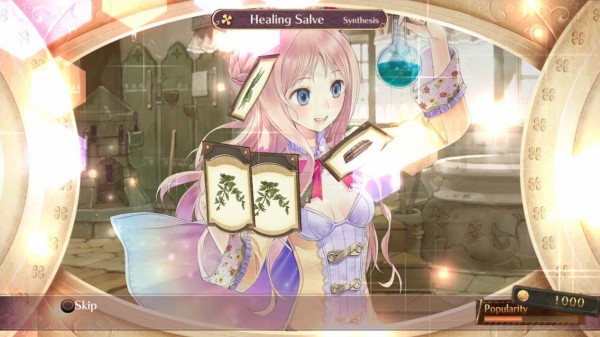
Now while players will be balancing their time between development requests and popularity boosting missions, the core element to Atelier Meruru is still alchemy. The alchemy system is as great as it was in past Atelier Arland games, as players will have to gather certain ingredients from either out in the field in gathering points, by defeating enemies or even buying them from a store to create items using alchemical recipes. Items with a higher quality will boost the final product’s quality with a higher quality levl allowing the item to deal out more damage, heal more or finish quests faster. Thankfully creating items is easier than ever, as Meruru’s recipe book will even show players if a certain recipes ingredients can be made with things they already possess.
Players will often need to create items to turn in quests, as well as to buff out their own team as Meruru, Totori and Rorona can deal out special attacks using disposable weapons created in alchemy. Now Atelier Meruru uses your standard turn based combat system where the player’s characters will take turns attacking with the enemy. However, if an enemy happens to turn their attention to Meruru, her two escorts can potentially block the damage with their own body with the use of the assist gauge.
This gauge, which fills up as players attack and receive damage, can also offer players a chance to create a string of combo attacks if Meruru uses an item to damage the opponent. This gives heavy hitting allies a chance to deal out twice as much damage in only one turn. Enemies can be quite difficult at times however, and there are a number of times that the difficulty level can spike, with enemies taking a drastic difficulty increase only one area away from smaller, weaker enemies.
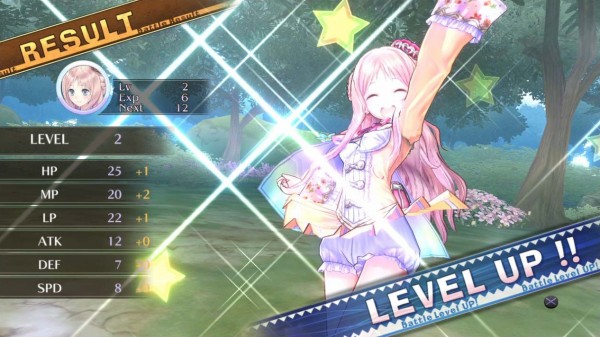
Now while players are fighting, gathering alchemical ingredients, finishing quests and developing the country, there is always one thing looming over them. The ever present calendar which ticks away days as if they were nothing at all. It is very easy for players to spend two weeks of time creating various items with alchemy, and any time the player travels on the main map, days pass as if they were nothing. In fact, some long journeys can take over a week each way. This can be quite worrisome as players see their precious time slip away, though a number of options are presented later on that allow the player to streamline some of their alchemical activities and place their focus on more important things, such as building a kingdom and experiencing the game’s lovely characters.
Overall:
Atelier Meruru: The Apprentice of Arland brings a satisfying close to the Arland series by capitalizing on everything that fans of the series loved. With an easy to understand and enjoyable to use alchemy system and fun battle system, players will find themselves entranced both in the workshop and out in the field. However where Atelier Meruru truly shines is whenever the characters interact with one another. As such, fans of the series would be doing themselves a great disservice to pass this title up while newcomers will likely find Atelier Meruru a bit more accessible than past titles. As such, there has never been a time to become an apprentice alchemist than alongside Meruru.


